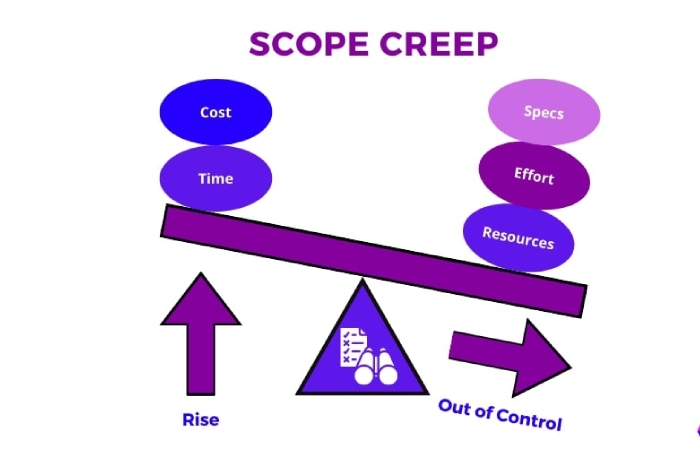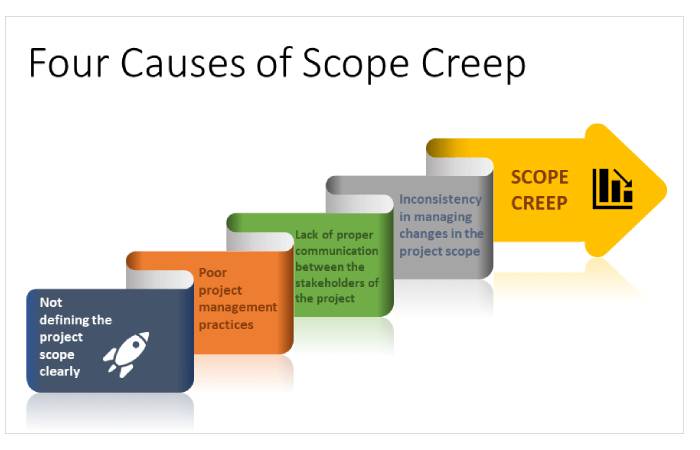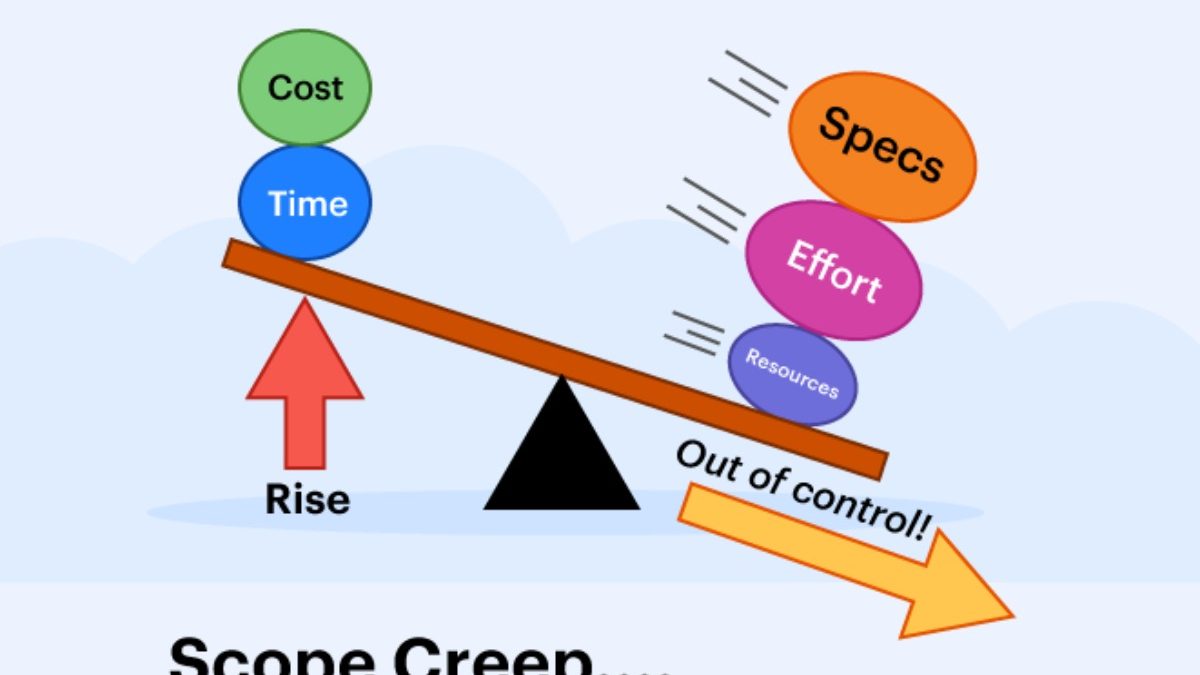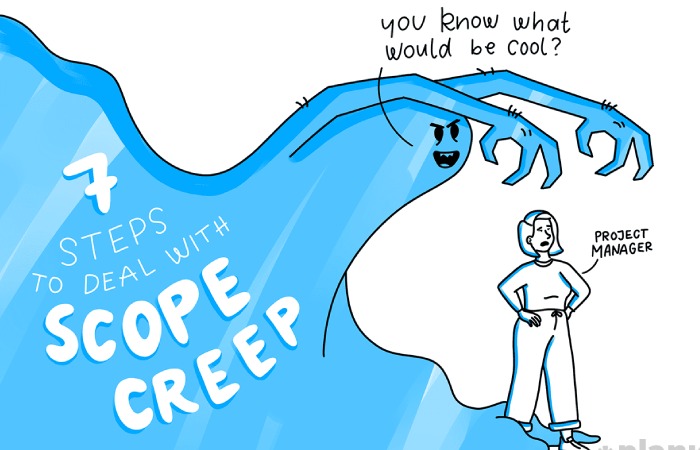What is scope creep – Scope creep is a term used in project management to describe uncontrolled project scope changes. This can include adding new features, changing existing requirements, or expanding the project’s goals.
Table of Contents
Understanding Scope Creep

Scope creep is a common problem in project organization, and it can significantly impact the project’s success. Scope creep arises when the scope of a project changes or expands beyond what was originally planned.
Here are some of the amazing factors for Scope Creep:
- Delays in the project schedule
- Increased costs
- Decreased quality
- Lack of satisfaction for stakeholders
- Poor communication between stakeholders
- Lack of a clear project scope definition
- Changes in the project’s environment
- Unrealistic expectations
- Clearly defining the project scope at the outset
- Implementing a change control process
- Communicating effectively with stakeholders
- Managing expectations
Major Challenging Project Manager
Scope creep can be a major challenge for project managers, but it can prevented or managed with careful planning and execution.
Here are some additional tips for preventing scope creep:
- Get buy-in from all stakeholders on the project scope before you start work.
- Document the project scope clearly and concisely.
- Create a change control process and ensure everyone knows how to use it.
- Monitor the project scope regularly and be proactive in addressing any changes.
- Communicate changes to the project scope to all stakeholders.
Scope creep is a term used in project management to describe the uncontrolled growth of a project’s scope. This can happen when changes are made to the project’s requirements without proper documentation or approval. Scope creep can have several negative consequences for a project, including:
- Increased costs: When the scope of a project grows, so does the amount of work that needs to be done. This can increase costs, as the project team may need to hire more resources or work overtime.
- Delayed schedules: If the scope of a project grows, it may also take longer to complete. This can lead to delays in the project’s delivery date, impacting the project’s stakeholders.
- Decreased quality: When the scope of a project grows, it cannot be easy to maintain the same level of quality. This is because the project team may be spread too thin, or they may not have the expertise to complete the new work.
- Dissatisfied stakeholders: If the scope of a project grows, some stakeholders may be unhappy with the changes. This can lead to conflict and dissatisfaction, further complicating the task.
How to Prevent Scope Creep
Some things can be done to prevent scope creep, including:
- Clearly defining the scope at the outset: The content should clearly defined and documented at the beginning of the project. This will help to confirm that one and all involved in the project is on the same page about what the project is supposed to achieve.
- Establishing a change management process: A change management process should set to ensure that any changes to the project scope are properly reviewed and approved. And also this will help to prevent unauthorized changes from being made to the project.
- Communicating effectively with stakeholders: Effective communication is essential for preventing scope creep. Stakeholders should be informed of the project’s progress and any changes to the project scope. This will help to confirm that everyone is on the same page and that there are no surprises.
Scope creep can be a serious problem for projects. Furthermore, still, it can prevented by clearly defining the project scope. By establishing a change management process, and communicating effectively with stakeholders.
Here are some additional tips for preventing scope creep:
- Get buy-in from all stakeholders: Make sure all stakeholders know the project scope and agree to it before the project begins.
- Be clear about the project’s goals and objectives: Make sure that everyone involved understands the project’s goals and objectives. This will help to prevent scope creep from happening.
- Set realistic expectations: Set realistic potentials for the project’s scope, budget, and schedule. This will help to prevent scope creep from happening.
- Be flexible: Be flexible and willing to change the project scope as needed. However, it is important to have a process in place for managing changes to the content.
Causes And factors of Scope Creep

Furthermore, scope creep is a common delinquent in project management, and it can significantly impact the project’s success. Scope creep arises when the scope of a project changes or expands beyond what was originally planned. This can materialize for a variety of reasons, including:
- Ambiguous or unrefined scope definition. If the project scope is not clearly well-defined. It is more likely that changes will requested later.
- Lack of any proper scope or requirements management. However, without a formal process for managing scope, it is difficult to track changes and ensure that they are approved.
- Inconsistent process for collecting product requirements. If the
- conditions are not gathered invariably. It is more likely that there will misunderstanding and changes later on.
- Lack of sponsorship and stakeholder involvement. However, if the project sponsor and stakeholders are not involved in the project from the beginning. They may not be aware of the scope and may request changes later.
- Project length. Longer projects are more likely to experience scope creep because there is more time for changes to requested.
In addition to these causes, several other factors can contribute to scope creep, such as:
- Poor communication. If there is poor statement between the project team and the stakeholders, it is more likely that changes will requested.
- Unrealistic expectations. If the stakeholders have unrealistic expectations about what the project can deliver, they may more likely to request changes.
- Changes in the business environment. If there are changes in the business environment, such as new regulation or new market opportunities. Then the project scope need to get adjusted.
Scope creep can have a significant impact on the success of a project. Moreover, It can central to delays, increased costs, and a decrease in the value of the final product. However, It is important to take steps to prevent scope creep from occurring, such as:
- Clearly essential the scope of the project at the beginning.
- Establishing a formal process for managing content.
- Gathering requirements consistently.
- Keeping the project sponsor and stakeholders involved.
- Communicating effectively with all stakeholders.
- Managing changes carefully.
Conclusion
In conclusion, I have argued that climate change is a solemn threat to our planet and that we must address it. And also I have also argued that the government has a responsibility to lead the way in addressing this issue. However, I hope that this essay has convinced you of the importance of taking action on climate change.


